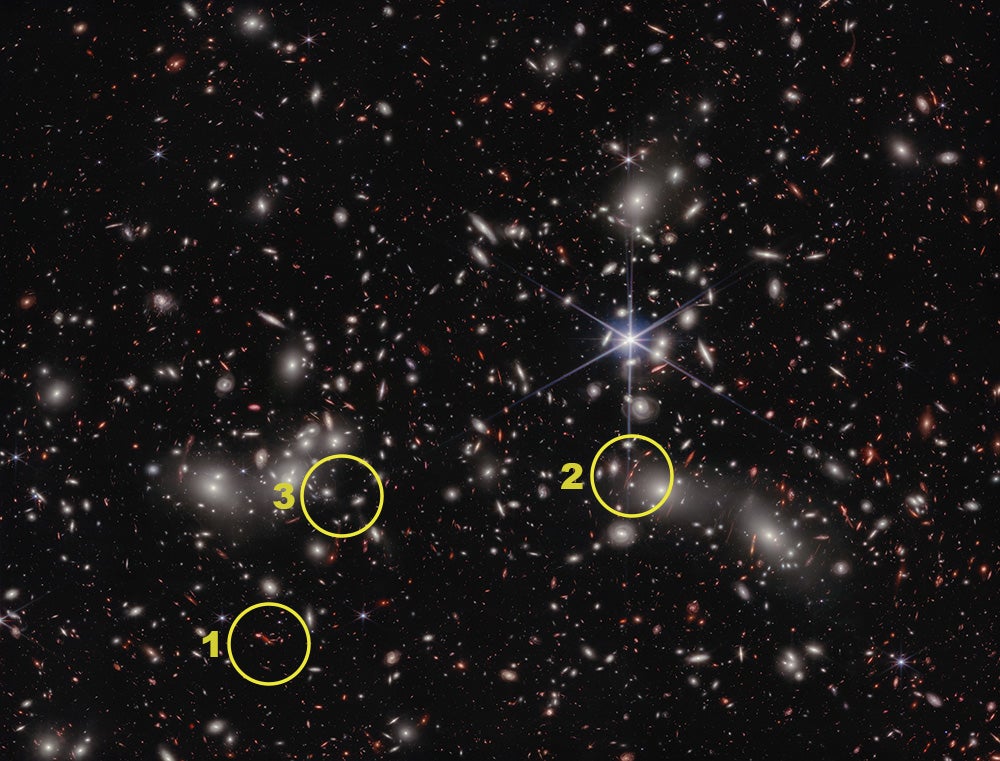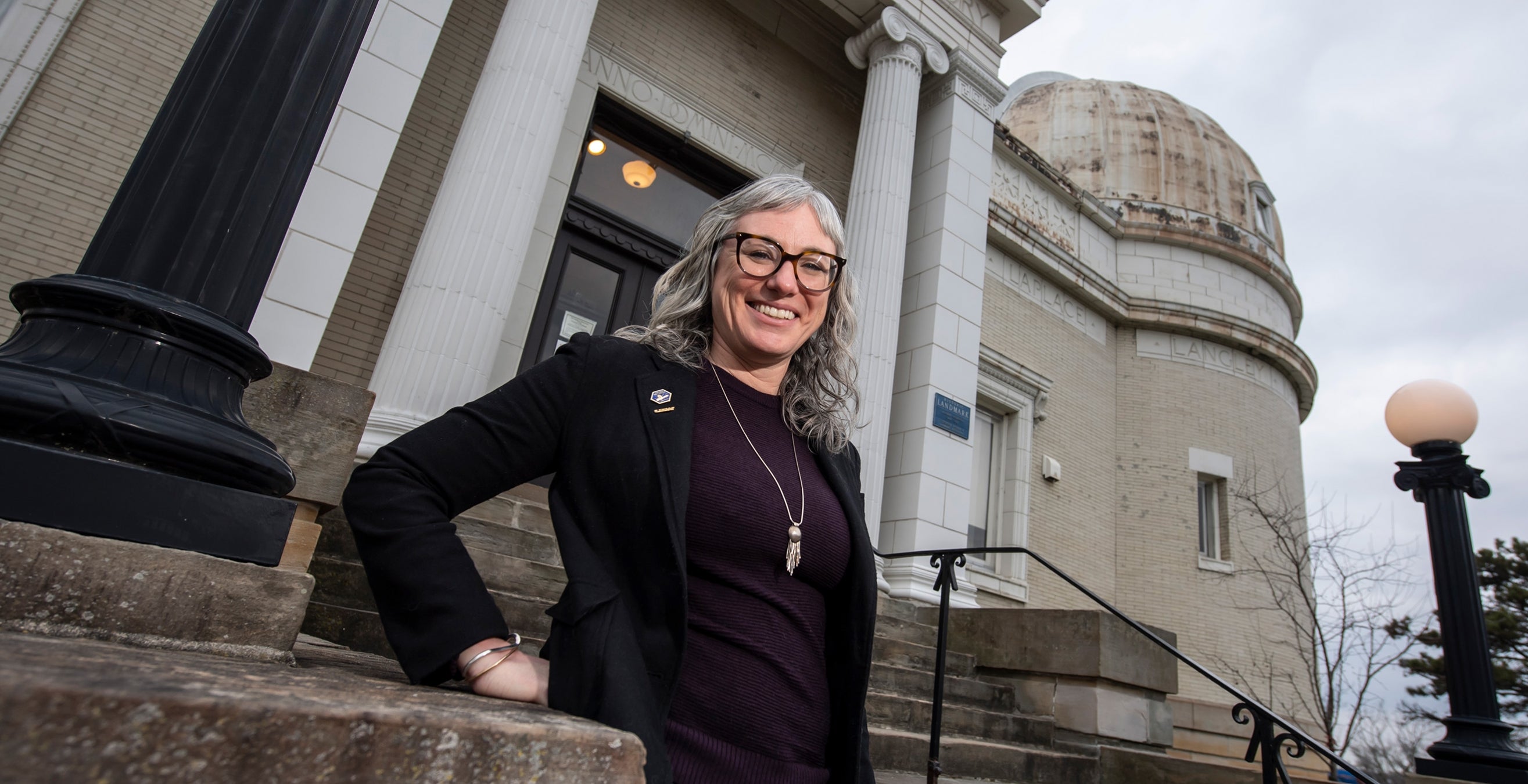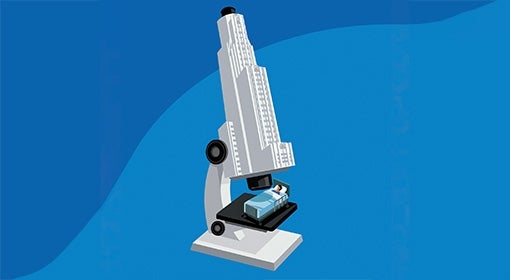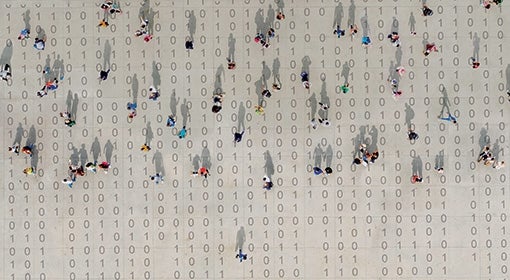At first glance, it might not seem like much: dots strewn across a black background, some red, some white, many blurry.
To Rachel Bezanson, though, it’s a treasure trove.
“It’s this unbelievably beautiful image with just a ridiculous plethora of cool sources that we can think about and analyze,” says Bezanson, an associate professor of astronomy in the Kenneth P. Dietrich School of Arts and Sciences.
Each dot represents an object whose light spent millions or billions of years traversing the universe before being captured by the near-infrared sensor of NASA’s James Webb Space Telescope over 30 hours in November 2022. The resulting image was pieced together by the UNCOVER team that Bezanson leads as one of two co-principal investigators.
The image is significant, not just for the wide and deep picture of a tiny patch of sky, but also for the merging galaxies known as Pandora’s Cluster, which appear as blurry white patches. The gravity of the cluster acts like a giant lens, magnifying and distorting the faint light of distant galaxies and making visible parts of the universe that would otherwise be beyond Webb’s reach.
Bezanson’s team has begun studying some of the most intriguing objects in the image — stretched out galaxies with their innards exposed by gravitational lensing, galaxies that were previously invisible to telescopes — but the real insights are yet to come. UNCOVER, a collaborative effort among researchers from dozens of institutions to collect and analyze this data, has two components: the observations in November and a second round later this year.
“The coolest thing about UNCOVER is that it will allow us to select 500 to 1,000 of our favorite things for secondary observations,” Bezanson says.
That hand-picked group will get another pass from Webb, this time with a different tool that teases light into its component parts. With that second layer of information, the team will be able to determine how far away the objects are and even what they’re made of, giving them insight into a period of the universe when galaxies were just beginning to form. That could further inform scientists’ understanding of the universe and humanity’s place within it.
“Every single star and every single planet and every single person starts in a galaxy. That’s the starting point,” Bezanson says.
Although Bezanson found her love of astronomy in college, she didn’t jump right into research. After graduating, she taught high school physics and astronomy for four years in Brooklyn, New York, but she found herself looking for something more interactive and inquisitive.
That drive has led to a career full of collaboration, and that’s only intensified in the past year. All of Webb’s observations are made available to the public, so Bezanson and her colleagues have been publishing nonstop. Ever since the first stream of data became available, an entire field of science has been driven by adrenaline.
“It’s been a crazy seven months,” says Bezanson. “I’ve been doing research at a pace that I haven’t really done since graduate school. It’s not normal, but it’s being sustained by our excitement with this new toy.”
Webb’s launch in December 2021 came after two decades of delays and cost overruns, and its resting distance from the Earth meant there was no hope of repair if something were to malfunction during its launch. As a result, many astronomers had tempered their hopes for what the telescope could achieve. But after the past year, Bezanson said the telescope is exceeding all expectations. Videos of scientists moved to tears by Webb’s unprecedented images — and the realization that they may soon be able to answer some fundamental questions about the universe — have garnered millions of views on social media.
“There’s going to be a paradigm shift about the way that we talk about this compared to even last year, because it was just invisible to us,” she says.
Thanks to Webb, for the first time, the invisible may just become visible.
The Galaxy, According to Bezanson
Thirty hours of observation, four images, one panorama and more than 50,000 individual points of light. There are plenty of details to focus on in this deep-field image from NASA’s James Webb Space Telescope. Here are a few standouts, as described by Pitt astronomer Rachel Bezanson, one of two principal investigators of the UNCOVER team.
Click on the numbers below to explore insights within the James Webb Space Telescope image.

1. A first look
While at first the image just looks like pinpricks of light, zooming in reveals a rich array of details. “There are a handful of things that I think are interesting because they just look beautiful,” says Bezanson. “One of my favorites is a dusty red galaxy that is totally invisible in previous imaging but just pops out in our imaging.”
2. Big stretch
One object, a single red dot, remains stubbornly unbent by the gravity of Pandora’s Cluster. It may be that this is a supermassive black hole or some other extremely compact object. Astronomers will have to wait for further imaging for an answer. “It’s fun to speculate, to think of these questions, and to know we’re going to be able to answer them in the short term,” Bezanson says.
3. The mystery dot
The nearby, fuzzy-looking galaxies of Pandora’s Cluster magnify and bend the light of distant objects, making them perfect targets for Webb. “There’s much more that can be done by studying how the stars are distributed in them,” Bezanson says. “And because we’ve stretched the image, we can see inside them more effectively.”
This story was published on May 5, 2023. It is part of Pitt Magazine's spring 2023 issue.





